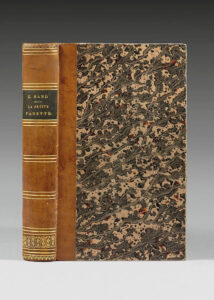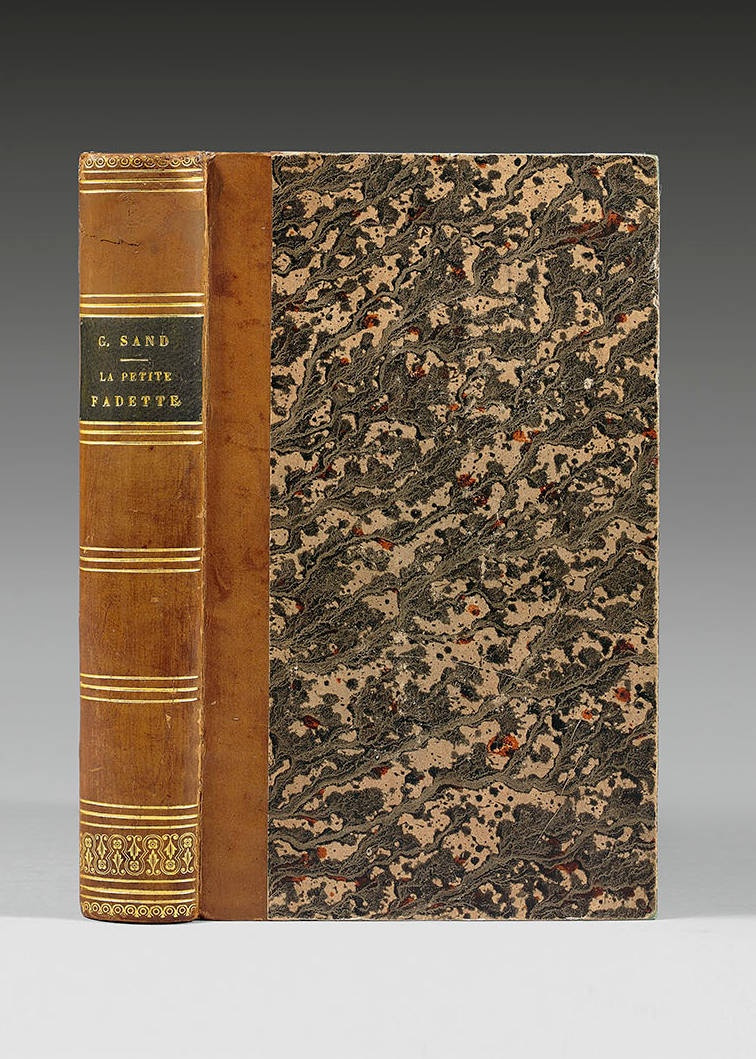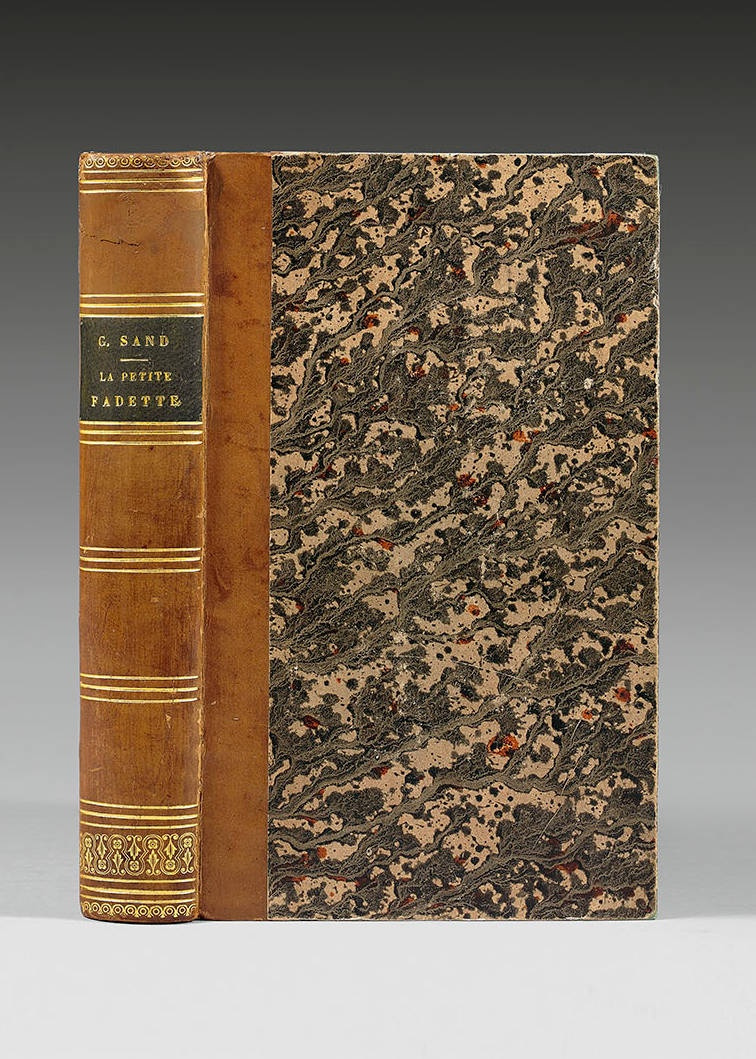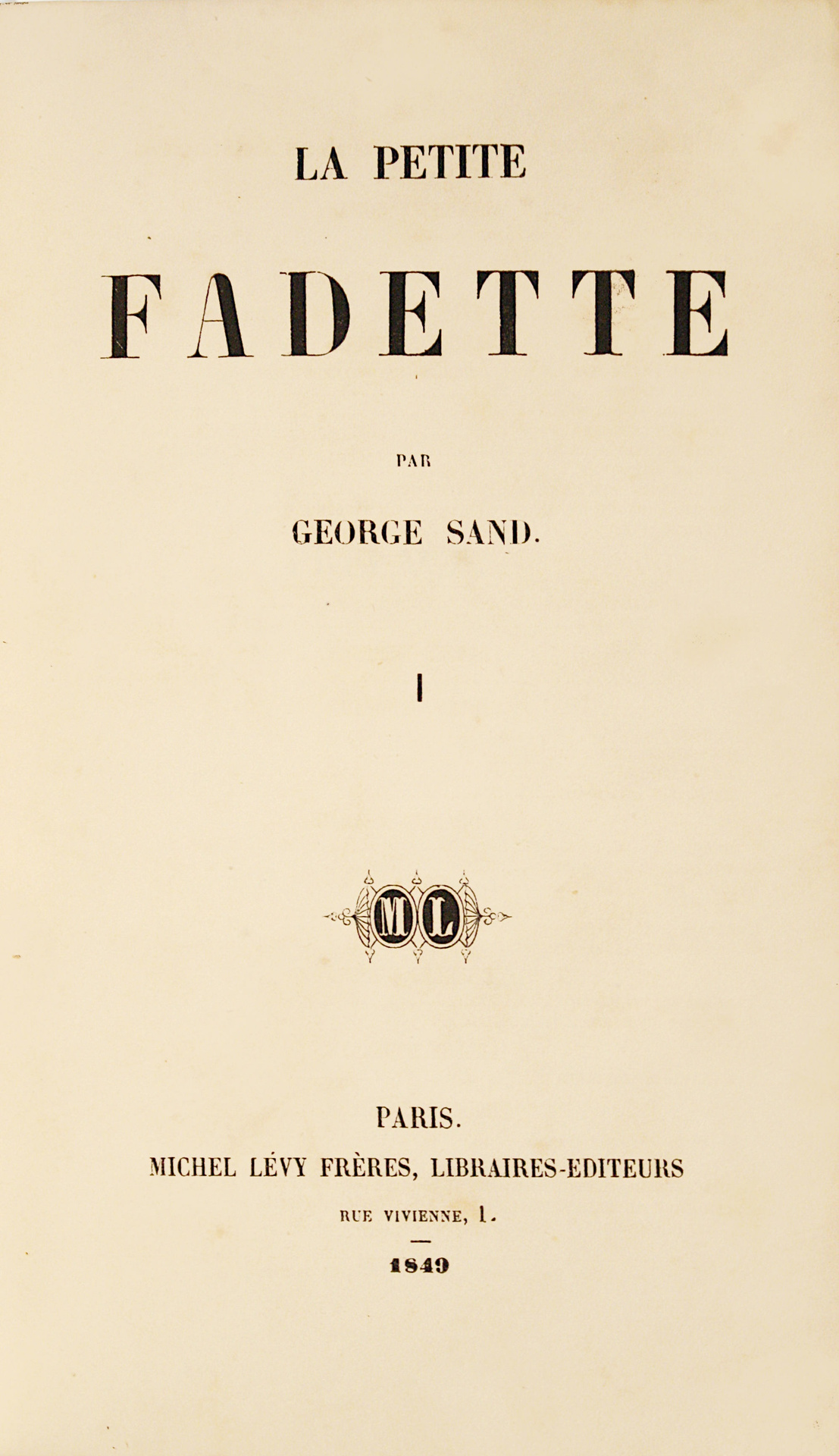Paris, Michel Lévy frères, 1849.
2 parts bound in 1 volumes 8vo [210 x 129 mm] of: I/ (2) ll., 335 pp. ; II/ (2) ll., 271 pp. Bound in light brown half-calf, flat spine decorated with gilt fillets, green morocco lettering-piece, mottled edges. Slight rubbing. Contemporary binding.
“Very rare and much sought-after” First edition (Clouzot) of this “rural novel that belongs to the best period of the author.” (Dictionnaire des Œuvres).
Clouzot, p. 245; Vicaire, VII, 238; Quérard, p. 590; Carteret, II, p. 312; Catalogue du baron Rothschild, 1638; Rahir, La Bibliothèque de l’amateur, 631.
« A rare work from the rural novels’ series”. (Carteret).
« With ‘La Mare au Diable’ and ‘François le Champi’, This book belongs to the author’s best period, who, returning to her native Berry, had rediscovered, with a serene mind, these subjects so êsily inspired, that renewed her art and brought her a large and lasting success…
Landry falls in love with the little Fadette, daughter of a kind of witch. Everyone despises this child. Landry, alone, was able to discover, hidden under mislêding appêrances, the naiveté and purity of this human being…
The plot finds its appêl in the subtle and fresh evocation of a rural world, that George Sand loves and knows perfectly. The poetic fiction is harmoniously mingled with rêlity in this picture where nature, described with grêt delicacy, and the characters, including the most humble, have the gracious freshness of an idyll. » (Dictionnaire des Œuvres, V, p. 231-232).
“George Sand occupied a significant place in 19th century literature. She transformed the novel. Between adventure stories and purely rêlistic novels, her style is a fine combination between fiction and truth, where a soft poetry and a delicate sensibility find their place and that could rêlly be the rêl French novel … Her influence was grêt abroad: Turgenev, George Eliot, Dostoevsky deeply admired her.” (E. Faguet).
Bêutiful copy of this rare first edition preserved in its contemporary binding.
According to our sêrch, among French public Institutions, only the French National Library owns this rare first edition.




